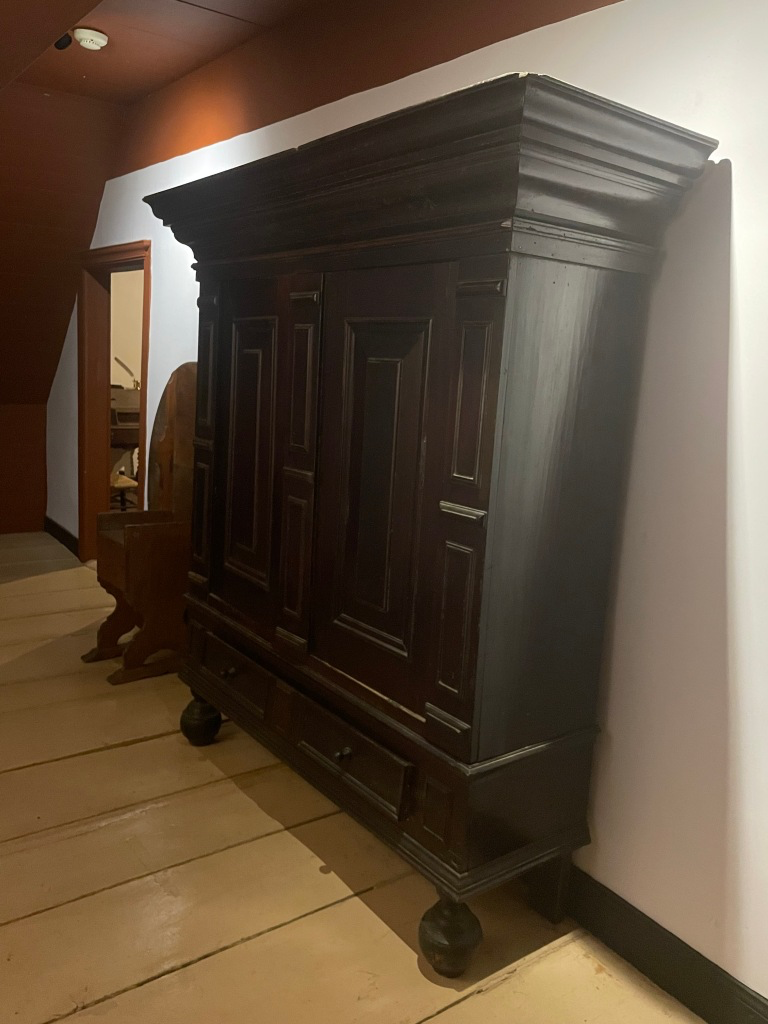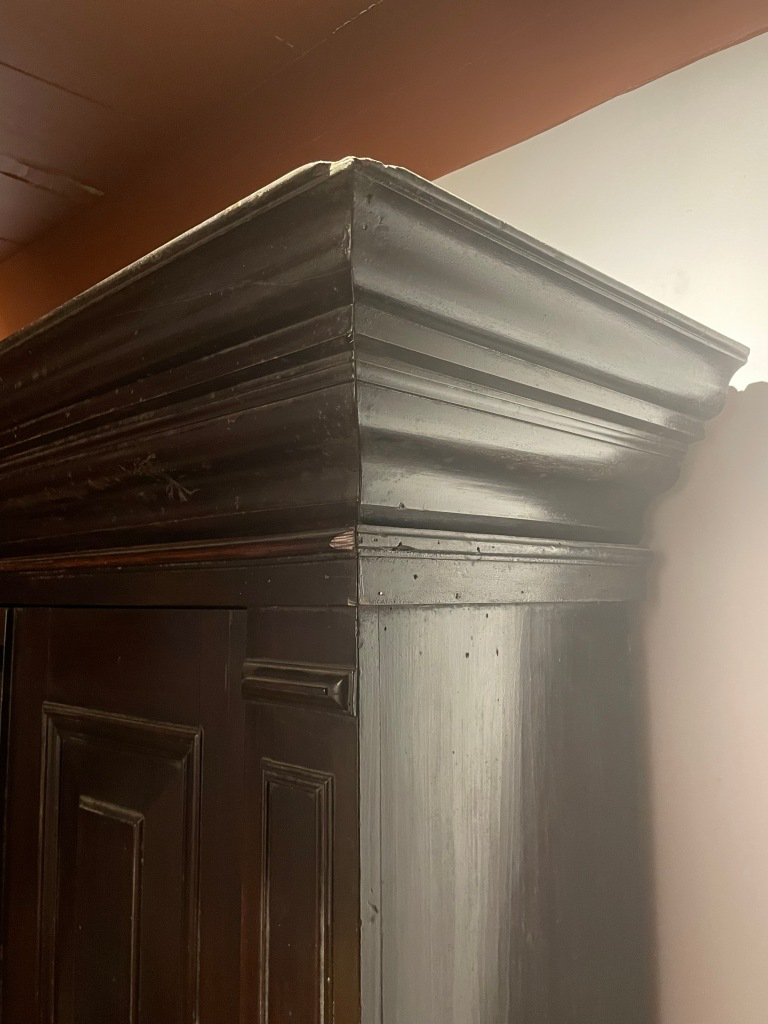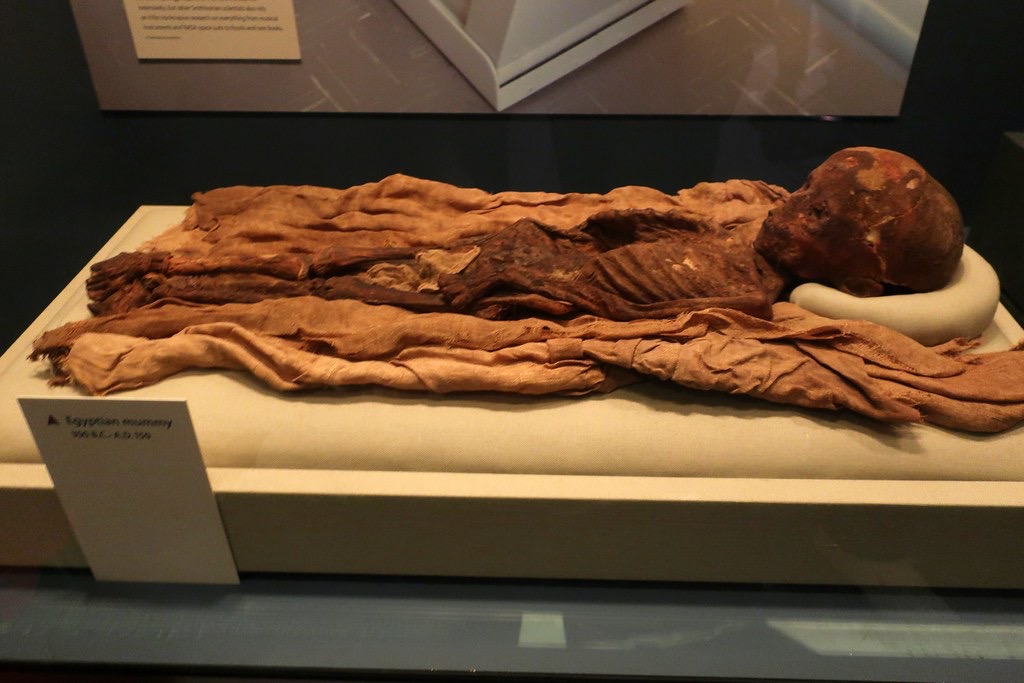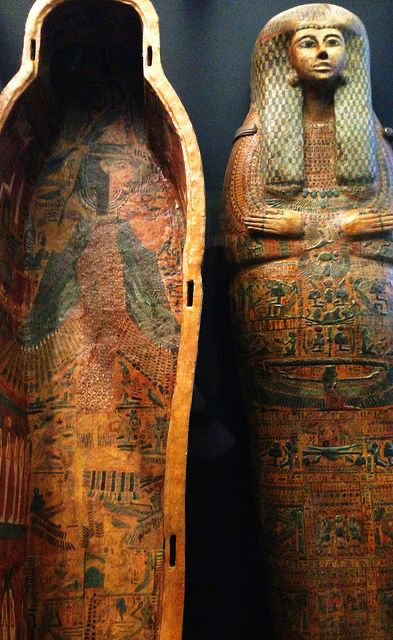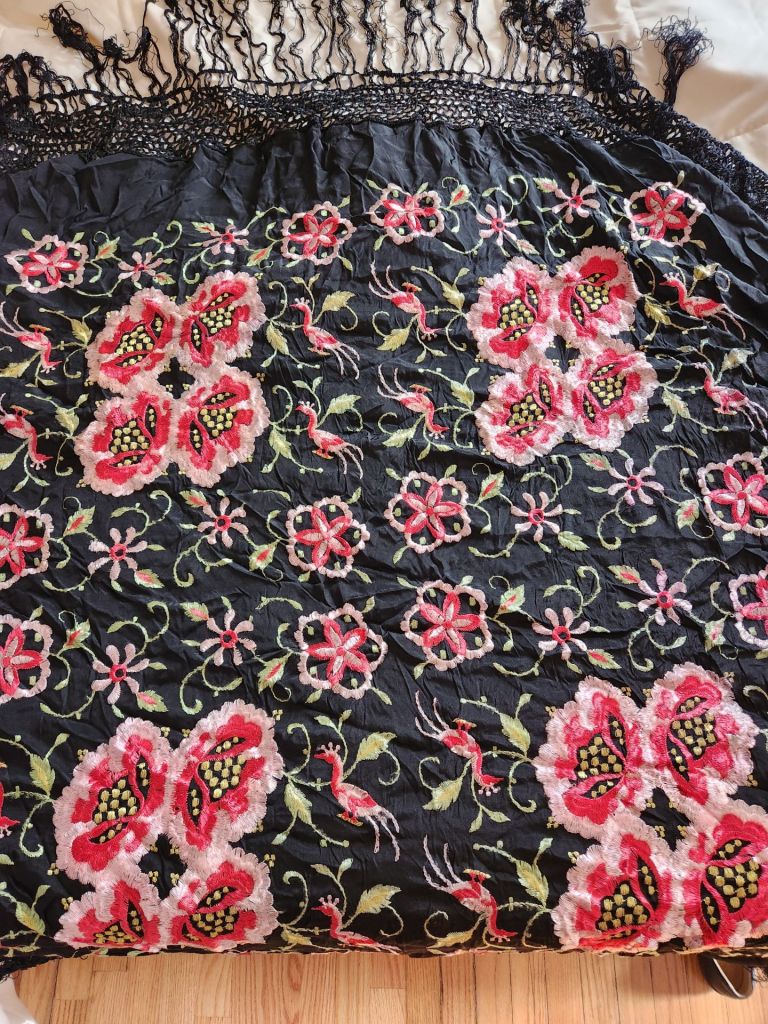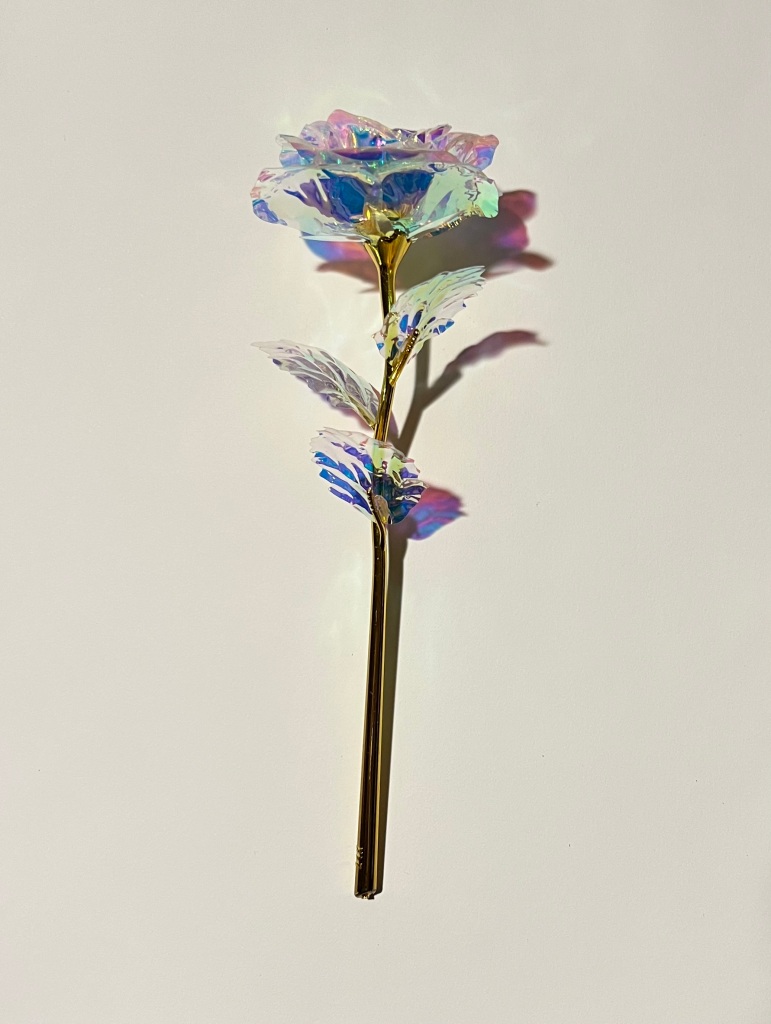Provenance
Kastens or large free-standing cupboards/wardrobes with two door panels and an exaggerated cornice were considered a staple piece of furniture in Dutch-American homes in the 18th to 19th century. Before being donated to Historic Huguenot Street by Richard R. Hasbrouck, this specific Kast displayed below, stayed in his direct descendent, Jacob J. Hasbrouck’s house from 1767-1850. This Kast was made in Kingston, Ny by a furniture maker in the Beekman-Elting Workshop whose name is unknown. Of the artifacts accepted by Historic Huguenot Street from the Richard Relyea Hasbrouck estate, the Kast was known as a major central piece in colonial New York. It signified the influence of Dutch culture throughout the Hudson Valley. Since Kastens were normally part of a woman’s dowry, it is possible that this Kast was in the dowry for Hasbrouck’s marriage either to Margaret Hardenbergh (which took place from 1776-1796) in 1793 or Ann DuBois from (1777-1854) in 1799.
Object Description
One of the many Dutch-kastens in the Jean Hasbrouck house. Made out of red gum, sycamore and pine. Standing at 73.25 in. tall and a width of 16.25 in.
Made out of red gum, sycamore and pine, this dark brown Kast stands at 73.25 inches tall and has a width of 16.5 inches.This Kast is standing on two ball feet in the front and two pegs the same height in the back. The first part closest to the legs include two rectangular drawers side by side with circular knobs attached to both in the middle. In between and on both ends of these two drawers is a vertical rectangular design the same length as the sides of the drawers. As we continue to move upwards we reach the middle of the Kast that holds two large doors in the shape of vertical rectangles with two smaller rectangles on the inside of each door panel where there is a continued theme of rectangular designs. On this section there are two longer vertical rectangles placed in between the two doors and on both outer sides of the doors. There are no knobs on these panels so you have to open them by pulling on them. On the inside of each panel there are three shelves large enough to fit a standard sized banker box. The top section of the Kast (cornice) is angled more outwards compared to the rest of the object with a length of 67.5 inches and a width of 22.5 inches. The wear and tear of this Kast is evident in the dents and chipped wood throughout the object and the large chipped piece of wood on the top front left corner of the kast.
Side view of the Kast. Has a width of 16.5 in.
Front left corner of cornice. Shows a large chip and some other small dents.
Narrative
When we think of storage furniture like cabinets, cupboards or wardrobes we think of a place that stores dishware, spare bedding, clothing or just clutter. We don’t tend to think about the impact of its physical attributes like its structure, the shape of the doors, the texture of the wood, etc. We typically have this type of furniture for its convenience, we don’t tend to perceive it as an indication of status or think about the cultural influence that led to the creation of these pieces. However, back in colonial New York with its strong Dutch influence, Kasten were that staple piece in these Dutch-American homes but because of these looked past reasons.
In the early 1600’s the Dutch colonized the Hudson Valley as well as parts of New Jersey, Pennsylvania, Maryland, Connecticut and Delaware. They named their colony New Netherland. But after surrendering to England in 1664, the capital city of the colony, New Amsterdam became what is now New York. This meant that the Dutch influence eventually faded away within 100 years. Because of their fewer outside influences, Hudson Valley, on the other hand, remained carrying out Dutch traditions, customs and continued speaking the language for the next 200 years.
These Kasten held a lot of significance during this time period for Dutch settlers and are now major indicators of that continued influence of Dutch culture and values because of the specific design and style. “It safeguarded not only such tangible treasures as gold, silver, and linen but Dutch notions of domestic life as well” (Berman, 1991) Because of its practicality due to storage it became an essential piece of furniture for Dutch settlers to own. And because of Dutch values, the standard Kast also symbolized one’s wealth and status in society. A typical Dutch family’s most prized possessions were their silver and gold items as well as textiles, so displaying their Kast in their living room for guests to see was a symbol of their achievements. Since these objects were considered to be too precious to leave out in the open, the Kast itself became a decorative piece.
Learning about the Kastens’ significance to a family’s status and wealth gives further insight into the Hasbrouck family’s economic and social standing throughout the Hudson Valley. Seeing this object displayed in the Jean Hasbrouck house shows that the family had valuables and money to show off as well as frequent visitors as this object was considered a conversation piece and meant for people to see.
Based on the images above it is evident that the inclusion of the rectangular panels and the exaggerated cornice were made to give the Kast a higher status look, and just make it more pleasing to the eye. However, what is interesting is that the materials used to give the Kast a more costly appearance like mahogany and red gum are both inexpensive. This contrast also ties in with how both the interior and exterior aspects of the Kast further gives insight into the Dutch’s values of functionality but also aesthetics. So, while the outside of the Kast is adorned with these rich-looking designs, the inside is actually very spacious with its deep shelves.
When seeing this massive cupboard on the Huguenot Street tour, isolated in the hallway of the Jean Hasbrouck House, I was intrigued to know what significance this piece of furniture held. Despite its size and grandiose structure I feel that people tend to look past an object like this because it is really just a basic functional cupboard. And yet, after doing research on it, there was so much to uncover. Just by looking at it, you can see the Dutch history, values and the role it played in their homes. With it still standing in the house today, these Kasten keep the Dutch-influence alive.

